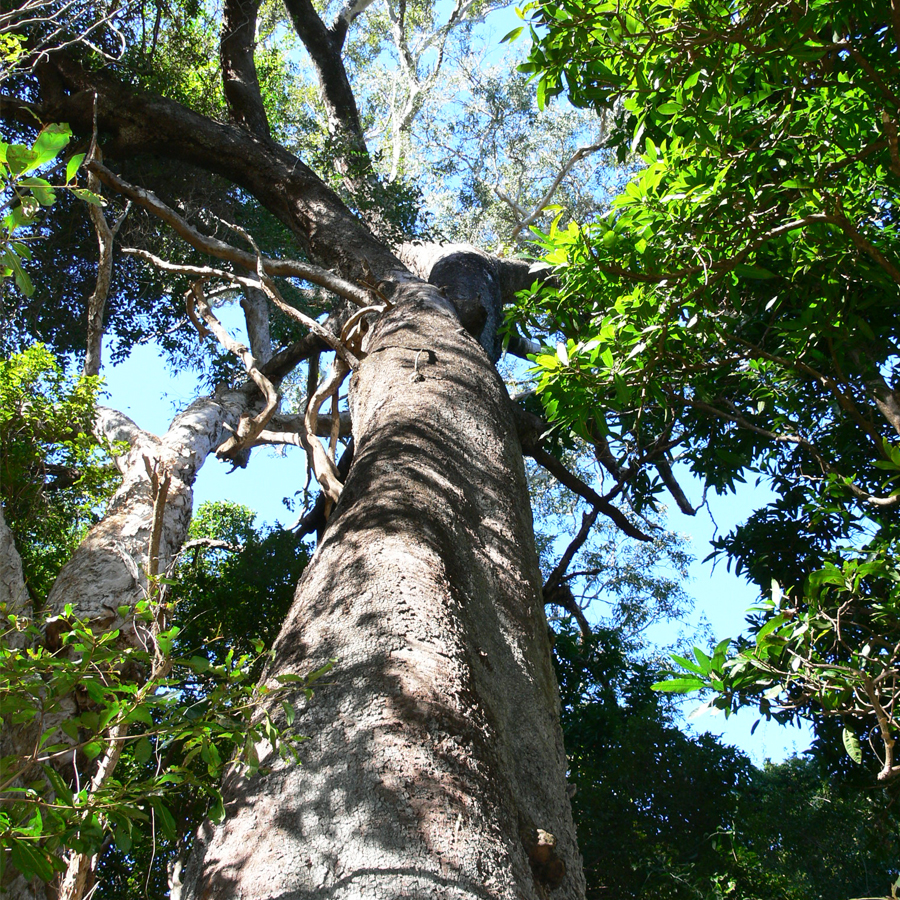Conservation Status
Queensland State: Vulnerable
Australian Government: Vulnerable
Species and status overview
Black ironbox is a eucalypt found on rivers, creeks and watercourses in clay or loam soils. Locally it can be found in Eungella National Park, however they are also found on roadsides, freehold and leasehold land from around Ayr to Rockhampton, and inland from the coast up to 100 km. Just 23 scattered populations of Black ironbox are known to occur within this broad region.
In the local region, Black ironbox have been recorded in the following areas
- Finch Hatton
- O’Connell River
- Cathu SF
- Sandy Creek south of Mackay
- Sarina District
- Bakers Creek
- Kelsey Creek
- Prospect Creek
It is often found with other riparian species such as paperbarks, Moreton Bay ash, forest red gum and river oak and sometimes in vine thickets.
Description
The Black ironbox is a distinctive tree with rough, box-like bark on the trunk and larger, lower branches. It features smooth blue to greyish bark in the upper branches. The leaves are dull to dark green, lance shaped and 8-15 cm long. It grows to around 30 m.
Flowering from December to March, the white flowers are clustered at the ends of branches. Sexual maturity is reached at 5 years and it can live to more than 100.
The Black ironbox has the smallest fruit of any eucalypt with a maximum of size of 0.2 x 0.2cm.
Conservation concerns
The main threat to the Black ironbox is the presence and spread of invasive and exotic weeds and grasses leading to increased fire frequency or smothering of mature and juvenile trees.
Known threats include
- Rubber vine, a smothering invasive weedy vine that covers riparian vegetation and reduces light availability for young Black ironbox seedlings
- Guinea grass increases fuel loads and fire intensity and poses a threat through reduced survival rates of seedlings and young trees
- The spread of other weeds such as Lantana camara, Bellyache bush and Chinee apple may also pose a threat
- Land management activities that increase stream bank erosion are also thought to be a threat
What can I do?
- Control rubber vine, Guinea grass and other weeds in areas of Black ironbox
- Avoid clearing in riparian areas
- Implement suitable fire regimes that do not promote weed species in communities adjacent to riparian vegetation. Generally these areas should not be burnt, however if fires are planned, avoid high intensity burns and ensure they are not too frequent
More Information
Photo Credit Steve and Alison Pearson
